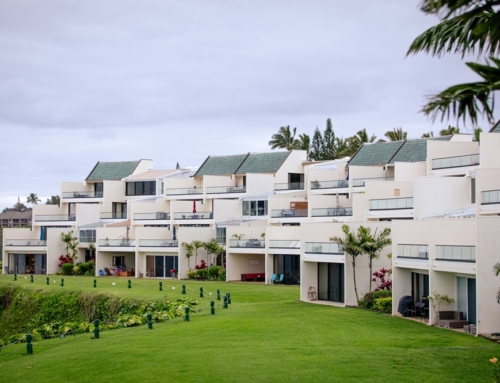John Coleris, a builder based in Bensenville, Illinois, and his wife, Sandy, have been checking out the competition for some homes they’re thinking of building in a booming area southwest of Chicago.
As he tells it, the average new construction home buyer had better brush up on his or her knowledge of home building or risk paying more — and getting less — for a home than they planned on.
“I was sort of shocked as I walked around some of these developments,” Coleris said. “I thought homes were being built for a reasonable price. But when you see where some of these developers area cutting corners, and the so-called ‘extras’ they’re charging home buyers for, it’s no wonder that new construction profits are way up.”
One thing Coleris has noticed is how lots have been divided into different categories. “You have standard lots, deluxe lots and premium lots,” Coleris explains. “Unfortunately, the term ‘standard’ now applies to the most undesirable lots. Deluxe lots are about average and premium lots are the best few.”
In one development Coleris visited, there were only 3 “standard” lots out of 150 in the entire subdivision. If you wanted a deluxe or premium lot, you’d have to cough up an additional $5,000 to $59,000 for the privilege. That’s a hefty percentage, given that the prices of homes started around $350,000 for a 3,600 square foot single family house.
Once he got inside some of the subdivision models, he began to notice other discrepancies. “In one house, the brochure mentioned ‘full’ basements. But I don’t know how they can call it a ‘full’ basement when half of it is a crawl space. And the part of it that’s full only has 7-foot ceilings instead of 8-foot ceilings,” Coleris said.
According to Coleris, adding an additional foot of concrete to the foundation walls would cost the developer approximately $500 per house. While that doesn’t seem like a lot of money, when you multiply that over 200 homes in a subdivision, you’re talking an extra $100,000 to give homeowners a little more height in their basements.
Would most homeowners pay for that? Coleris says they would, which at the developer’s markup could turn a $100,000 cost into a $100,000 profit. Add another couple of feet to the basement ceiling height and you’ve just added a quarter of a million in profit to the developer’s coffers.
Another thing some builders are doing is putting in undersized utilities (for the size of the home) as “standard.” For example, Coleris saw several subdivisions where builders offered 3,500 square foot houses with 40 gallon hot water tanks. Rooms generally have two wall outlets. Additional outlets cost extra. Dimmer switches cost extra, too. As much as $350 each for something that costs about $6 in your local home improvement store.
“Home buyers are getting nailed for everything, because builders are taking the short route wherever possible,” he said.
Don’t even get him started on the upgrades. “If you look at the models, everything in there is an upgrade, so it gives buyers a false sense of what comes with the home. In a 3,600 square foot home that costs $350,000, you could easily put in $100,000 and never even notice,” Coleris noted.
So what should new construction home buyers look for?
-
Buy a home from a quality builder or developer. Just because a developer is building in volume (that is, several subdivisions at once), doesn’t mean they’re a quality developer. Thoroughly check out the builder’s reputation before you sign the contract. That means, knocking on doors of subdivisions the developer has already completed and finding out how happy the owners are with the finished product. You should also check with the municipality where the current and former subdivisions are located. If there have been any complaints or if the builder has been found to be substandard or not in compliance with local building codes, the building or planning departments will know.
-
Don’t be fooled by the “starting from” price. No matter how cheap the developer advertises the homes to be, yours will almost certainly cost more. Either you’ll want to upgrade the lot, the appliances, the tile and carpet, or add that extra foot or two of concrete to your full basement.
Make sure you know the top price you want to spend (including additions and upgrades) before you step foot into the door. Once you start feeling the luxurious thick-pile carpet in the model homes, it’s easy to get sucked into the upgrade game.
- Scrutinize the “standard” list. A standard list is essentially what comes with the home at the base price. It’s just like when you buy a new car, and the dealer tells you what comes standard with the base sticker price.
You should know what’s standard in each house before you make a decision about what you want to buy. If you’re comparing subdivisions, take the standard list with you and compare them at home, side-by-side. You may find that one subdivision is a better deal than another simply because more things come with the package.
- If you don’t understand, ask. Most home buyers may not think to question whether a 40-gallon hot water tank is big enough. It may be, if it’s one of those more expensive quick recovery systems.
If you don’t know whether a particular appliance or mechanical system will do the job for your home, ask the builder. If you want to double check the answers you get, consider paying a different contractor for an hour or two of his time to go over the plans and check them out.
Finally, Coleris says some home buyers would be much better off building a smaller smarter than a larger mini-mansion.
“So many developers are building mini-mansions that won’t last. You’d be much better off building 2,500 feet of quality space than 3,500 feet of space that will die in ten years,” he adds.
Published: Jan 5, 1998






Leave A Comment